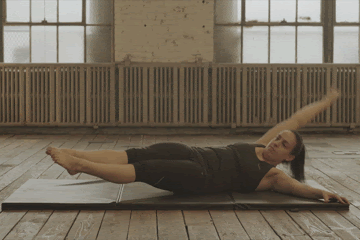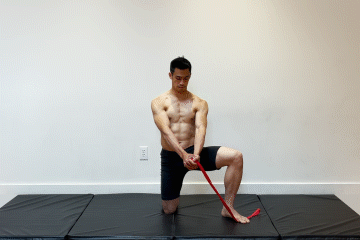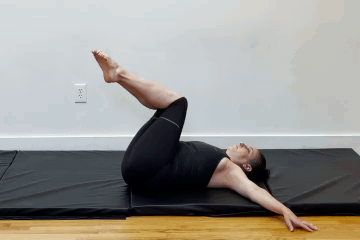
Join the tribe of Movement & Calisthenics Athlete – People just like you that are working with their own body weight to get strength, lose fat build muscle, recover from injuries and live their best lives!
💥Sculpt Your Abs with the Best Exercises for Obliques
Ready to build your obliques? We prepared for you the list of best exercises for obliques you can do together with videos how to perform them and coaching pointers.
When we talk about the core, the abs are usually the muscle group people are pertaining to. Often, the obliques or the side of your core, are forgotten and not trained.
This is a HUGE mistake because having strong obliques not only gives you a better-looking waistline but can also improve your posture, help to prevent lower back pain, improve your workout performance, and so much more!
The best exercises for “side abs” are not on your typical gym workout list, but they SHOULD BE. These exercises will target this often forgotten muscle group and help you get that six-pack look!
Many people think that the best exercises for obliques are side crunches and side bends. These exercises do not target all of your oblique muscles effectively, so it’s best to choose alternatives that better use your time and effort.
There are many other great exercises you can do to strengthen your obliques. In this article, we will discuss some of the best ones so you can make faster progress in your training journey!
✨What are the obliques?
The obliques are a muscle group located on the side of your torso. They are responsible for rotating and flexing your spine, as well as stabilizing your core.
They are divided into two: the internal obliques and external obliques that basically share the same function. So for an easier discussion, we’ll refer to the whole obliques for all of the contexts.
Oblique function🎯
There are five functions of the obliques, two of which many people are not familiar with. Knowing these muscular functions will help us better understand why it is important to train the oblique and how to do it properly.
- ☑️ Spina flexion – This refers to the movement similar to crunching forward like when doing sit-ups.
- ☑️ Lateral flexion – Doing a bending motion sidewards to easily explain this movement.
- ☑️ Trunk rotation – Rotating your torso by twisting your upper body as seen in the photo above.
- ☑️ Posterior Pelvic Tilt- The obliques help facilitate the PPT movement. If you’ve been following Bodyweight Training Arena, The Movement Athlete, and calisthenics in general, you should be familiar with this term. This simply means tilting your hips backward. This motion better engages your core and offload unnecessary loading from the lower back when performing various movement patterns. This is why PPT is vital for many calisthenics exercises.
- ☑️Abdominal drawing in – This pertains to shifting your belly button closer to your spine which also helps engage your core further and improve muscle growth of your abs and obliques.
Why train obliques? Oblique benefits 🏆
Many people skip out on training their obliques because “it’s all cardio” or “I am just trying to lose weight” or “I like to train my abs first”.
This is simply a poor way to develop a strong and overall healthy body. You burn calories while working your core but more importantly, having healthy, strong, and mobile obliques can achieve the following:
- ✊ Better posture – Research says that having muscular imbalances can lead to improper posture, so eliminating these imbalances is key for better posture.
- ✊ Lower risk of getting lower back pains – a 2016 paper shows strong evidence that lower back pain stems from having a weak core.
- ✊ Lower risk of injury – Strong core stabilization helps prevent injuries. If you want more help regarding injury prevention, check this out: How to Avoid Injuries When Training Calisthenics
- ✊ Better movement performance – From regular daily movements to exercise movements, all will benefit from having strong core stabilization thanks to stronger obliques.
- ✊ Stronger balance– It’s not just when you’re having troubles with balancing a freestanding handstand. Core strength also translates to better overall balance into simpler movements such as walking, standing, jumping, or more complex patterns such as pistol squats or dancing.
🤸Best Exercises for Obliques
When training with unilateral exercises, don’t forget to train the opposite side of obliques. Remember that there’s always the left side and the right side.
Also, note that ALL of the exercises below require POSTERIOR PELVIC TILT and DRAWING IN OF THE ABDOMINALS, which stimulates the obliques and the core in general.
🔥Side-plank variations
🤜The side plank is one of the best exercises for developing strong obliques that translates to better gains in other movement patterns. This is anti-lateral flexion movement meaning it trains your obliques to counter unwanted flexion and strengthens you into a stable position.
We’re covering the basic positions and some of the basic progressions of the exercise, but there are other variations and combinations you can add to the exercise to add a degree of difficulty.
How to perform:
- Place your arm on the floor with your legs extended and straight.
- Push down your shoulders and lift your hips until you form a straight diagonal line with your body.
- Hold for a specified amount of time.
- Repeat for the other side.
- Repeat for sets.
Coaching Pointers:
- PPT
- Keep your shoulder pressed down away from your ears and towards the ground.
- Hand stacked over your shoulder
- Hips squared and facing forward
Easier: Do lifts instead of holds, support with your knees instead of your feet
Harder: Elevate your feet, a combination of holds and motions, move into your elbow, add some twisting motion
🔥Side v-ups
🤜The next exercise is the side v-ups which adds an explosive strength and mobility factor hinging at the hips. This is a popular exercise in the gymnastics world as it delivers results, especially for more motions that require an explosive set of obliques.
How to perform:
- Lie on your side with your legs together and your support arm holding you out for balance.
- Engage your core and lift your upper body and lower body slightly off the floor. This will stimulate a hollow body position and will be the starting point of the exercise.
- Compress your body by lifting your upper body and lower body simultaneously.
- Lower down with control.
- Repeat for reps.
- Repeat for the other side.
Coaching Pointers:
- PPT
- Choose a progression that suits your skill level
- Use your core to facilitate the compression movement instead of using your head and legs
- Lower down into a hollow hold and don’t let your legs touch the ground
- Don’t arch your lower back
Easier: Bent knees, just tuck towards your body instead of the compression, just the lower body movement, just the upper body movement, side crunches
Harder: Slower tempo when lowering, adding static holds at the top and/or bottom position
🔥Side-plank Variations
🤜For resisting the twisting motion, we will come back to the plank but this time, with a different variation. The one-arm one-leg plank challenges the obliques as you aim to maintain a solid and squared position. The raised opposite arm and leg adds an instability factor. You might feel a tendency to twist your hips or upper body to an easier position, but you must resist this.
How to perform:
- Begin in a regular elbow plank hold position.
- Simultaneously lift one arm and the opposite of that leg.
- Hold for a specified amount of time.
- Switch arms and legs and repeat.
Coaching Pointers:
- PPT
- Shoulders depressed
- Elbows stacked over your shoulders
- Keep your hips squared
- Raise your arm and leg until aligned with your upper torso
Easier: Keep your legs on the floor and just raise your arms, do lifts instead of holds, perform with knees as the base of support, perform with hands on the floor instead of the elbows
Harder: Longer period holds, weighted leg and arms, elevated feet, base support on an unstable surface
🔥Side choppers
🤜The side chopper exercise is one of the best exercises for the obliques since it applies resistance along the diagonal fibers of the obliques. It does, however, require you to have a good set of resistance bands to add resistance to the movement pattern.
If you’re working out in a gym, a cable machine performs as a good alternative to the lack of resistance bands. Another option to have is the medicine ball rotational toss.
It’s good to include these weighted variations to further overload the obliques for further growth and development.
How to perform:
- Begin in a high kneeling position but with the front leg stepping diagonally.
- Step on the resistance bands and gauge it depending on your skill level.
- With straight arms, grasp the bands and twist your body in the opposite direction while pulling the band upward overhead.
- With control, lower down until near your leg.
- Repeat on the other side and repeat for reps.
Coaching Pointers:
- PPT
- Draw in your abs to pre-activate the obliques
- Arms extended and elbows locked
- Use your obliques to facilitate the movement
- Don’t use your arms to pull
Easier: Lighter resistance band
Harder: Heavier band
🔥Windshield wipers
🤜Going back to the bodyweight exercises, the windshield wipers is a solid option to have especially because of the scalability of the exercise for beginners to advanced athletes.
To maximize your oblique gains with this exercise, ensure to perform it with proper form instead of using the legs to do the movement.
How to perform:
- Lie down with your back on the floor.
- Extend your arms sidewards for balance.
- Draw in your abs and tilt your hips backward so that your lower back is flat on the floor.
- Raise your legs until perpendicular to the ground.
- Lower your legs to the side until close to the floor.
- Return back to the perpendicular position.
- Lower down to the other side.
- Repeat for reps.
Coaching Pointers:
- PPT
- Keep your lower back flat on the floor. There should be no space between your lower back and the floor.
- Use a progression according to your skill level
Easier: Limit range of motion, bent legs
Harder: Straight legs, hanging windshield wipers, weighted ankles, slower tempo, hanging leg raises
🔎Focus on compound movements
While giving your obliques the stimulation and care it deserves; we cannot rely solely on these movements if we want to improve our overall physique and strength.
Compound movements are still your best friend for overall development. Learn more about using split vs full-body training to understand how to schedule your workouts fully.
Proper nutrition 🍌
Choosing the right exercises for you and implementing proper training protocols is just half of what you need to make significant gains with your obliques and abs.
Proper nutrition through eating whole foods and meeting the caloric and nutrient needs will still determine your progress to define your 6-pack.
Here’s a complete guide for proper nutrition: BODYBUILDING Nutritional Guide
Creating Oblique Workout👊
At The Movement Athlete we believe training your whole core is very important and that includes what we call: Side Work aka Obliques
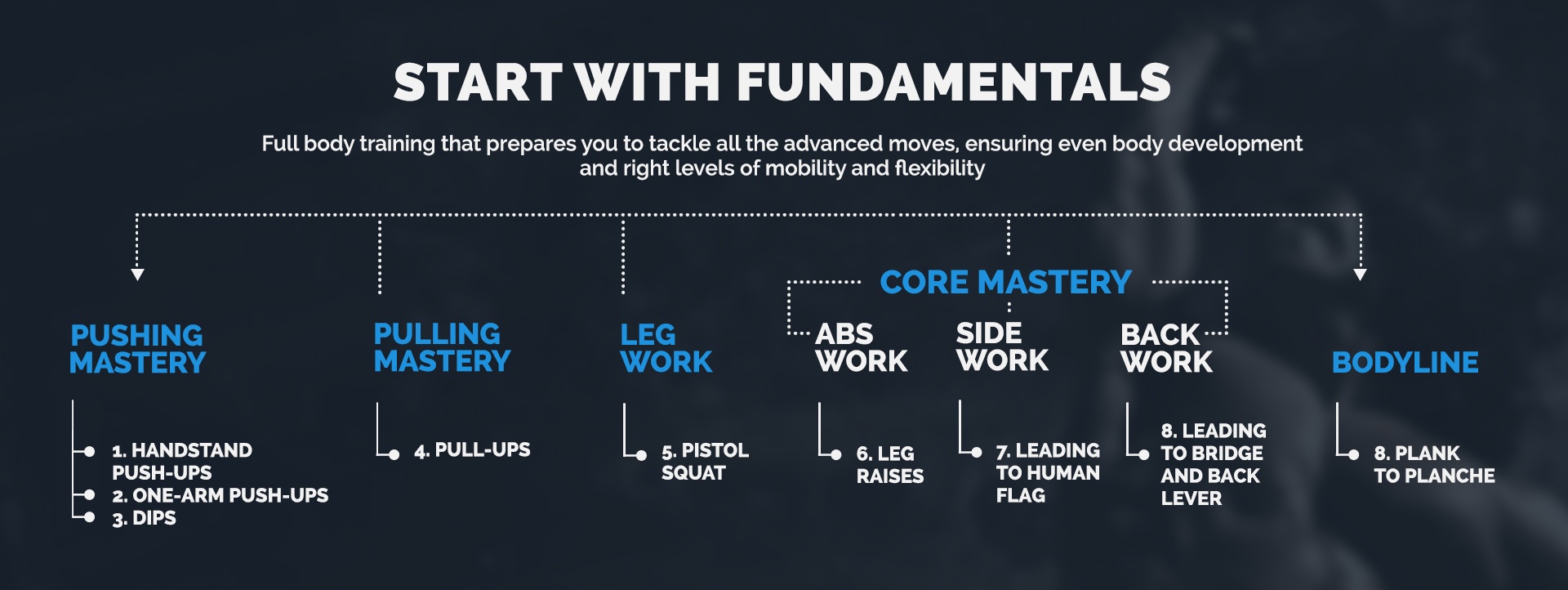
when you start using The Movement Athlete the first thing we will do is to do an assessment to see how far on the Obliques Progression are you.
Once we know that we will create a personalised training program just for you. It will inlcude Warmup, Skill Work, Strenght Work, Muscle & Endurance work as well as cooldown.
You can learn more about our program here
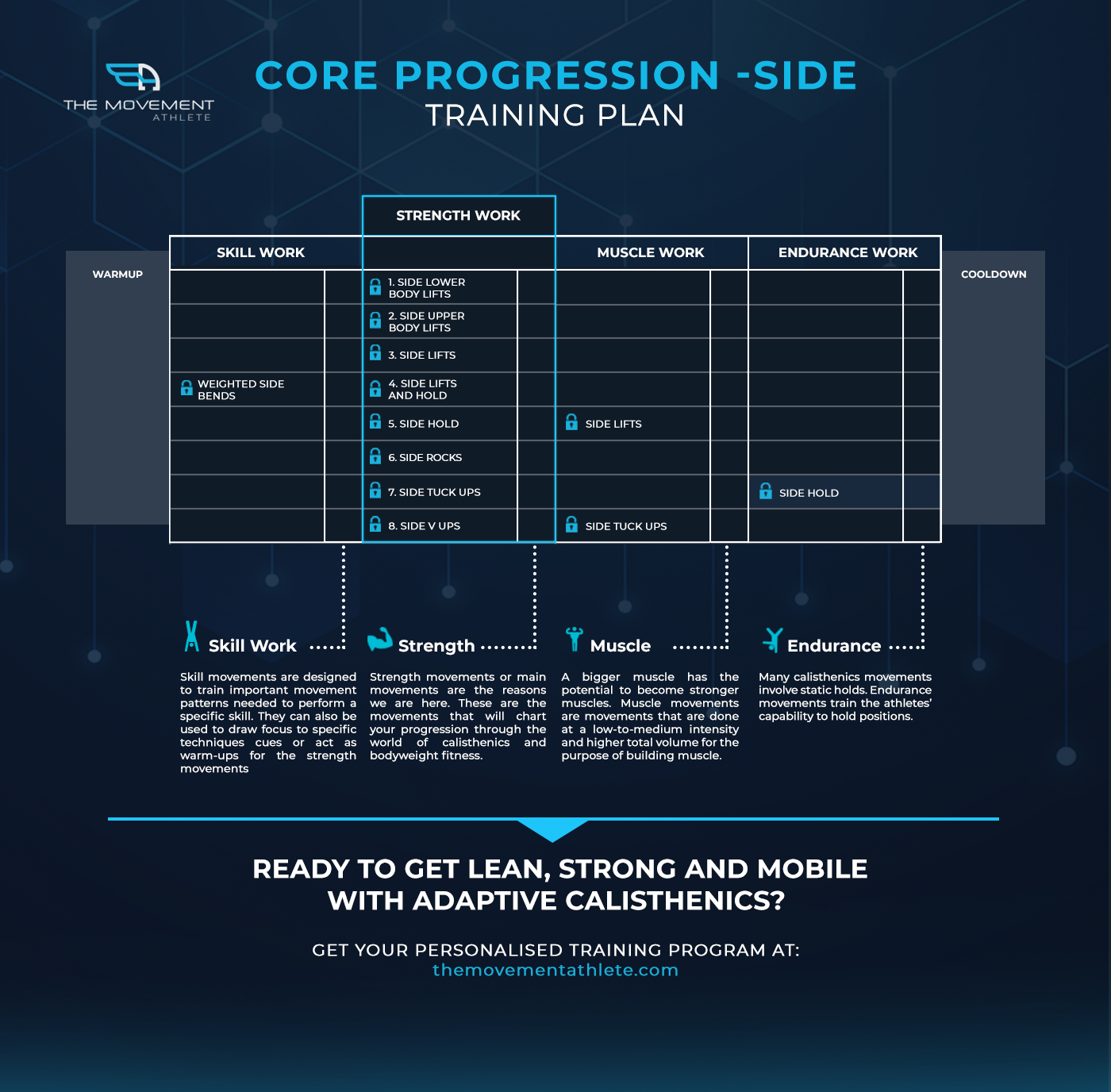
💥Example of Best Oblique Workout
Know that the best training program is the program that is personlaised to you and your particular level. That will ensure that you are not getting injured but you are being challanged enough so your muscles grow.
Below is the example of the oblique workout that you would see inside our app.
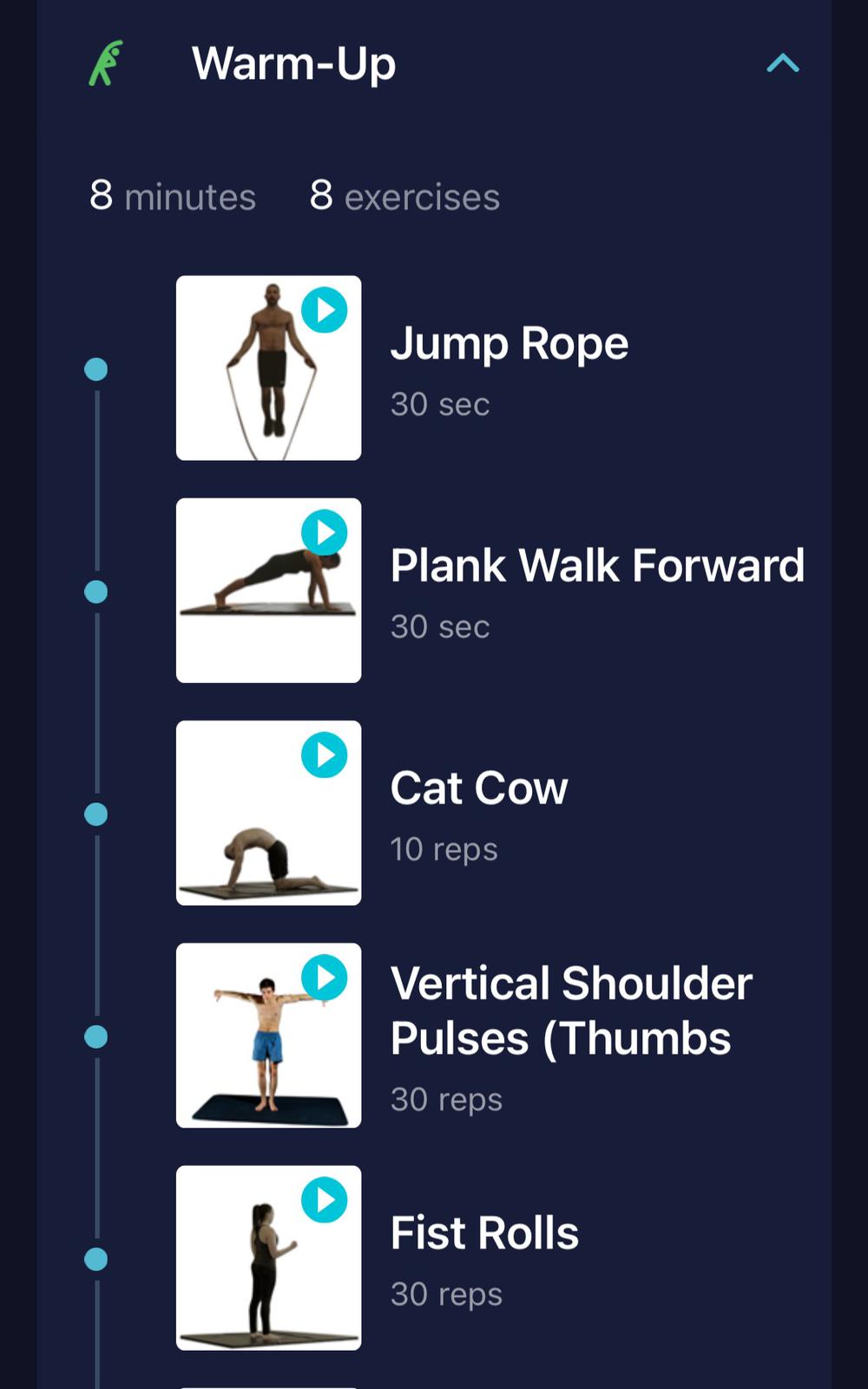

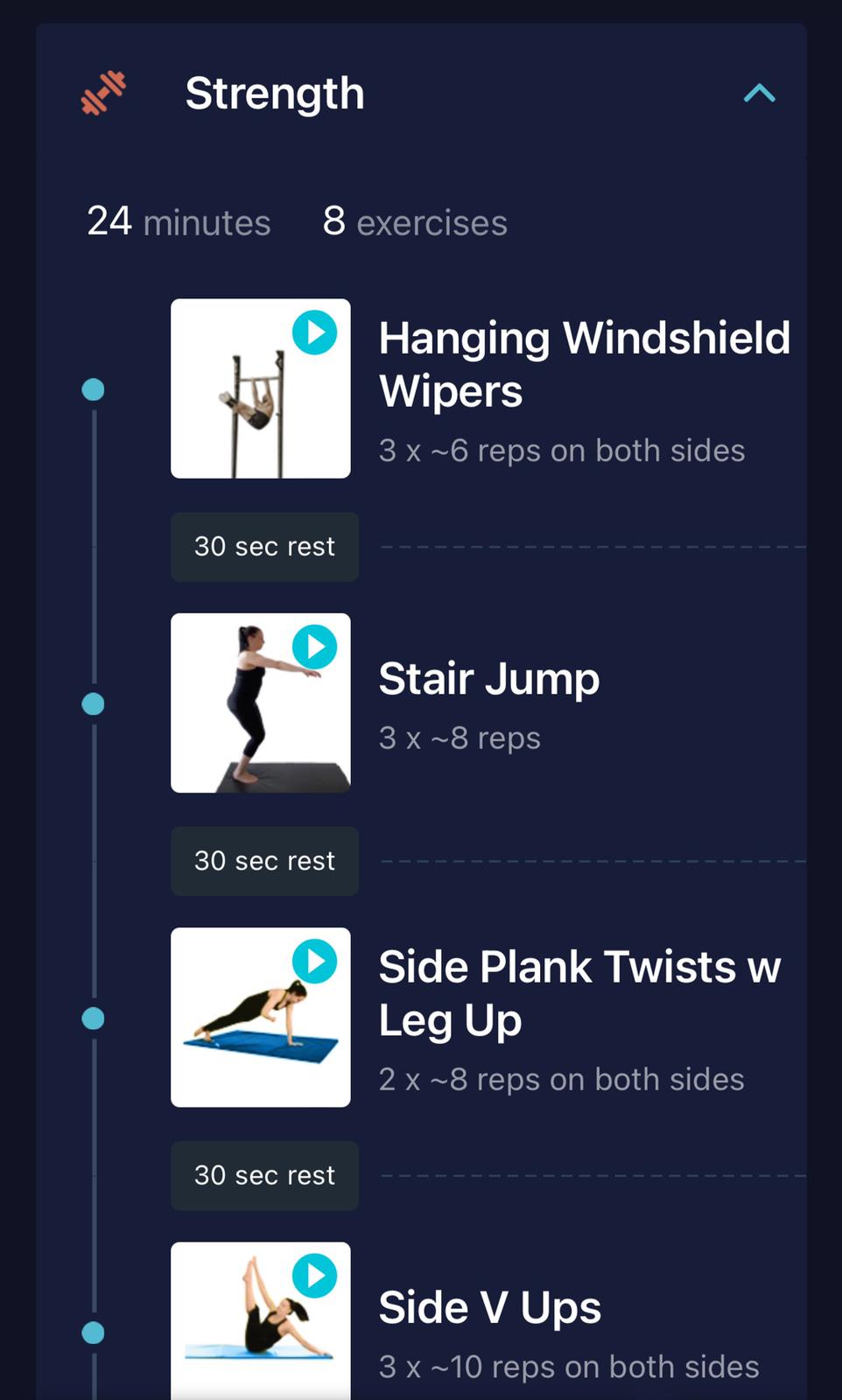
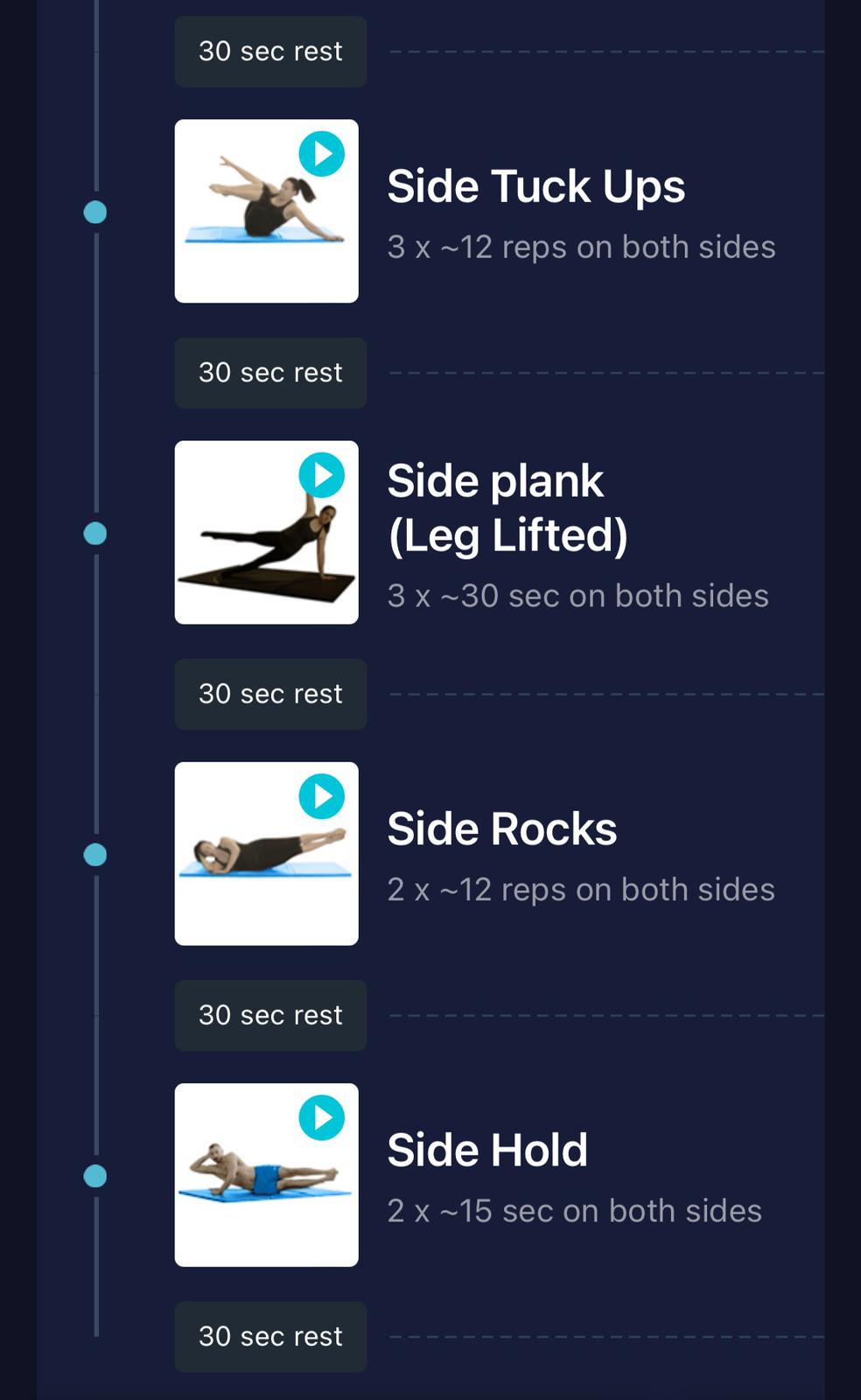
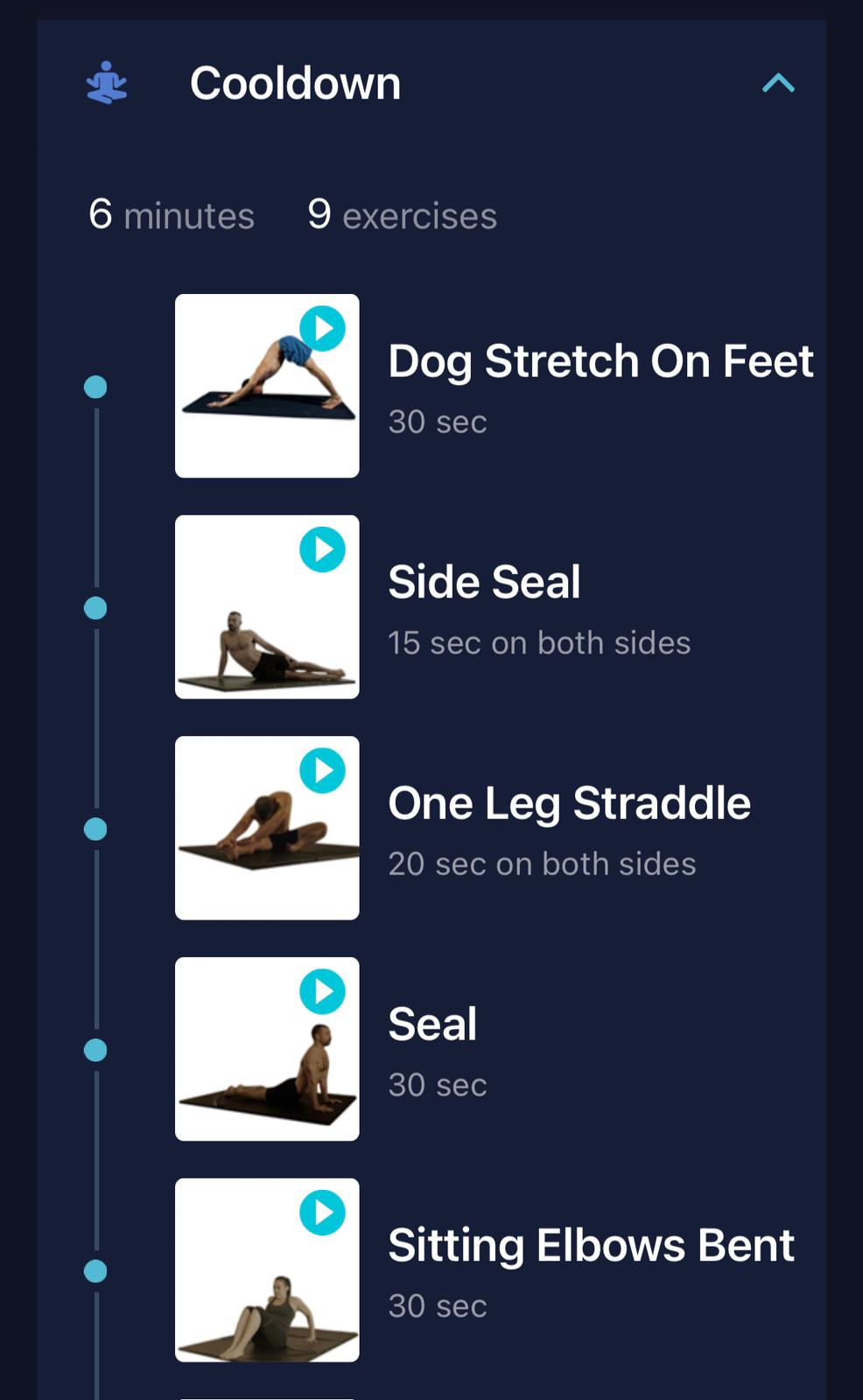
☝️How to implement oblique exercises in a workout
You don’t always have to do all these oblique exercises during your ab workout. You can choose one for each ab session. Aim to train at least 1 to 4 times per week for your obliques together with your abs. This depends on your skill level and other training protocols you follow.
For the sets and reps, aiming around 3 to 4 sets of 10 to 20 reps (30 to 45 seconds for hold time) is ideal to maximize growth. The volume varies depending on the intensity of the exercise and your capacity to execute it with good form.
🔎Best Oblique Exercises FAQ 💯
🔎 What is the most effective exercises for obliques?
The best oblique exercises are the ones that target the oblique muscles directly and help to tone and strengthen them. Some of the most popular oblique exercises include side bends, crunches, and twists. These exercises can be performed with or without weights, and can be done either standing up or lying down. For best results, be sure to perform these exercises regularly and focus on proper form to avoid injury.
But the best oblique exercises will depend on your fitness level and we strongly recommend to follow an assessment to determine what exercise are safe for you to perform now.
Remember the exercises you will have the biggest impact if they are hard enough but not too hard so you would get injured.
🔎 Does working out your obliques make your waist smaller?
Yes, working out your obliques can help to make your waist smaller. Some of the best exercises for this are crunches, side bends, and twists. These exercises help to tone and strengthen the muscles in your sides, which can give you a more defined waistline. While you won’t see results overnight, consistency with your workout routine will pay off in the long run!
🔎 Can i do oblique exercises while pregnant?
Yes, you can do oblique exercises while pregnant. However, it is important to listen to your body and not push yourself too hard. If you feel any pain or discomfort, stop the exercise and consult with your doctor. There are many different oblique exercises that are safe for pregnancy, so talk to your doctor or a certified fitness instructor to find out which ones are best for you.
🔎 What are some good exercises for obliques?
Some good oblique exercises include crunches, side bends, and twists. These exercises help to tone and strengthen the muscles in your sides, which can give you a more defined waistline. While you won’t see results overnight, consistency with your workout routine will pay off in the long run
🔎 Are oblique exercises necessary?
Here at the Movement Athlete we are all about holistic body development, so while you will hear that oblique exercises are not necessary, they can be helpful in achieving a more toned and defined waistline. If you are looking to tone your obliques, then including some exercises that target this area in your workout routine is a good idea. Remember to listen to your body and not push yourself too hard, as this can lead to injury. If you have any pain or discomfort, stop the exercise and consult with your doctor.
🔎 Are some oblique exercises bad for you?
While most oblique exercises are safe, there are a few that can be bad for you if not done properly. One example is the Russian twist, which can put stress on your spine if not done correctly. If you have any pain or discomfort while doing an oblique exercise, stop the exercise and consult with your doctor. Another exercise to be cautious of is the side plank, as this can also put strain on your spine if not done properly. Again, if you feel any pain or discomfort, stop the exercise and consult with your doctor.
🔎 When should I avoid oblique exercises?
If you are pregnant or have any pain or discomfort in your sides, it is best to avoid oblique exercises. Consult with your doctor before beginning any workout routine, especially if you have any health concerns.
🔎 What are some beginner exercises for obliques?
Some beginner oblique exercises include crunches, side bends, and twists. These exercises help to tone and strengthen the muscles in your sides, which can give you a more defined waistline. While you won’t see results overnight, consistency with your workout routine will pay off in the long run! If you are new to exercise, it is always best to consult with your doctor before beginning any workout routine.
🔎 How often should you do oblique exercises?
There is no set rule for how often you should do oblique exercises.
Despite the fact that most experts advocate strength training two to three times each week, you may strengthen your obliques every day without overtraining. It’s unusual for your abdominal muscles to become so tired that you’ll need a recovery day.
However, it is important to listen to your body and not push yourself too hard. If you feel any pain or discomfort, stop the exercise and consult with your doctor. Some people may be able to do oblique exercises every day, while others may need to take a break in between days. Ultimately, it is best to find a schedule that works best for you and stick with it as best as you can.
It also depends on your goal . If you are trying to build muscle, then you will need to exercise more frequently. However, if you are just trying to tone your muscles, then you can probably get away with exercising less often. Consult with a certified fitness instructor or your doctor to find out what is best for you.
🔎 Are exercises for obliques the best way to lose weight?
Oblique exercises can help you to lose weight, but they are not the best way to lose weight. To lose weight, you need to create a calorie deficit, which means that you need to burn more calories than you consume. Diet and exercise are both important when it comes to losing weight. Oblique exercises can help you to tone your muscles and create a more defined waist
🔎 Do oblique exercises burn fat?
Yes, oblique exercises can help to burn fat. Remember that to lose weight, you need to create a calorie deficit, which means that you need to burn more calories than you consume. Diet and exercise are both important when it comes to losing weight. Oblique exercises can help you to tone your muscles and create a more defined waistline, which may help you to burn more calories overall. However, if you are looking to specifically target belly fat, then there are other exercises that may be more effective. Speak with a certified fitness instructor or your doctor to find out what is best for you.
🔎 How long does it take for oblique exercises to work?
There is no set time frame for how long it will take for oblique exercises to work. However, consistency with your workout routine will pay off in the long run! If you are new to exercise, it is always best to consult with your doctor before beginning any workout routine.
🔎 Do oblique exercises slim waist?
Yes, oblique exercises can help you to slim your waist.
These exercises help to tone and strengthen the muscles in your sides, which can give you a more defined waistline.
Although oblique exercises can help to shape your waistline, slimming your waistline relies on more than just oblique workouts alone. A healthy diet and regular cardiovascular exercise, in combination with frequent oblique toning exercises, may help you reduce your waistline.
While you won’t see results overnight, consistency with your workout routine will pay off in the long run! If you are new to exercise, it is always best to consult with your doctor before beginning any workout routine.
🔎 Do oblique exercises make you wider?
Oblique workouts can help you add inches to your waist. The obliques may develop a broad, flat form as a result of muscle growth. If you want to keep a slim waist while still maintaining your core strength, modify your workout.
Oblique exercises help to tone and strengthen the muscles in your sides, which can give you a more defined waistline.
🔎 What are the best exercises for obliques for women?
The best oblique exercises for women may vary depending on your fitness level and goals. However, some beginner oblique exercises that are considered safe for most women include crunches, side bends, and twists. These exercises help to tone and strengthen the muscles in your sides, which can give you a more defined waistline. As you progress, you can add more challenging exercises to your routine such as planks and Russian twists.
🔎 What are the best oblique exercises for diastasis recti?
If you have diastasis recti, it is best to consult with your doctor or a certified fitness instructor before beginning any workout routine. Some beginner oblique exercises that are considered safe for most people with diastasis recti include crunches, side bends, and twists. These exercises help to tone and strengthen the muscles in your sides, which can give you a more defined waistline. As you progress, you can add more challenging exercises to your routine such as planks and Russian twists.
🔎 What are the best oblique exercises for older adults & seniors?
The best oblique exercises for older adults may vary depending on your fitness level and goals. However, some beginner oblique exercises that are considered safe for most older adults include crunches, side bends, and twists. These exercises help to tone and strengthen the muscles in your sides, which can give you a more defined waistline. As you progress, you can add more challenging exercises to your routine such as planks and Russian twists.
When doing oblique exercises, be sure to:
– start slowly and gradually increase intensity
– use proper form to avoid injury
– listen to your body and stop if you feel pain
– consult with your doctor before beginning any workout routine, especially if you
The VERDICT: The Best Exercises for Obliques
🥇🥇🥇
Training your obliques is important to have a well-rounded, aesthetic physique that’s capable of movement and pain-free.
There are many exercises to choose from, but make sure you’re doing the best exercises with proper form to facilitate faster progress towards your goals.
If you want to build your core and your whole body to its maximum potential at the comforts of your own home, then we invite you to take this FREE ASSESSMENT. It will take 5 min and you will be able to see right away when you are on your journey and receive your FREE PERSONALISED TRAINING PLAN


